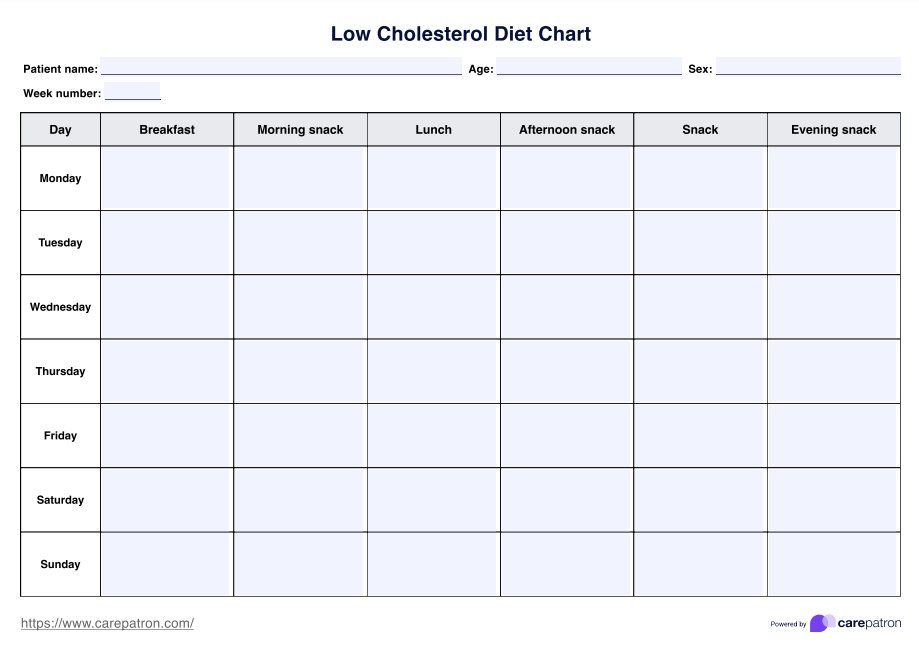This is usually helpful for individuals advised by doctors to lower their cholesterol, those with a family history of heart problems, healthcare professionals who educate about healthy eating, and anyone striving to stay fit and healthy.

Low Cholesterol Diet
Discover the essentials of a Low Cholesterol Diet Chart and download a free PDF template. Help patients make healthier choices and manage their cholesterol levels.
Low Cholesterol Diet Template
Commonly asked questions
A Cholesterol Diet Chart serves as a guided meal planner, an educational tool offering nutritional insights, a dietary tracker aiding progress monitoring, and references for healthcare professionals providing tangible dietary recommendations.
The time required to complete a Low Cholesterol Diet Chart varies depending on individual dietary needs, preferences, and the extent of detail included, typically ranging from a few minutes to an hour.
EHR and practice management software
Get started for free
*No credit card required
Free
$0/usd
Unlimited clients
Telehealth
1GB of storage
Client portal text
Automated billing and online payments











